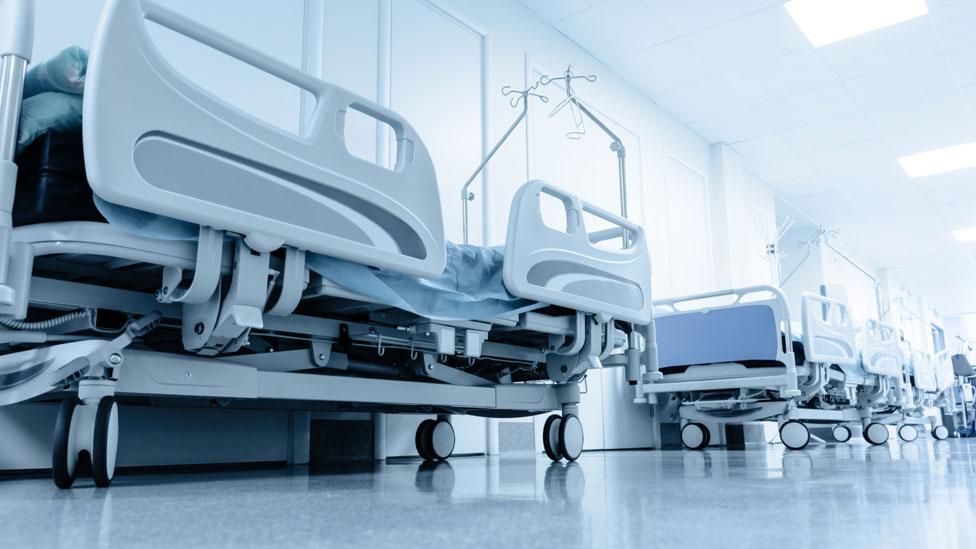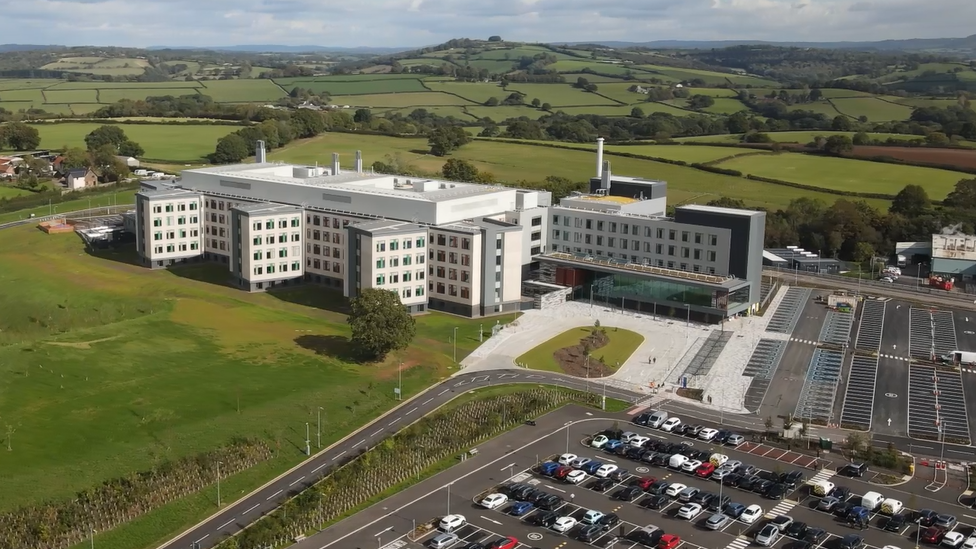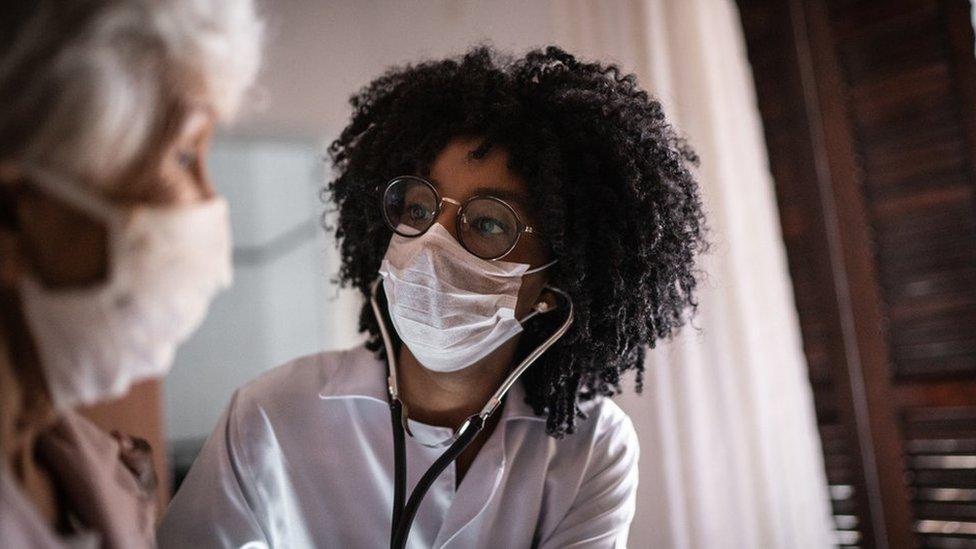Covid-19: Record numbers in hospital in Wales
- Published

Hospital admissions have stayed fairly steady over the last week although they are generally rising
There are more patients in hospitals in Wales with Covid-19 than at any time - including the peak of the pandemic.
Latest figures show 1,529 beds are occupied - 20% of all patients in hospital.
They include 983 beds occupied with confirmed Covid-19 patients.
However, the number of patients in critical care or on ventilators with coronavirus has only reached 40% of the levels at the height of the first wave.

About a third of all Covid patients are in the Cwm Taf Morgannwg health board area, where more than 530 cases were reported linked to infection outbreaks inside five hospitals.
But although lower numbers, the increase in patients is most marked in Betsi Cadwaladr (up 48%), Swansea Bay (up 23%) and Hywel Dda (up by a third) in the last week.

The number of Covid patients in hospital (on 10 November) was 1,529 across Wales. This is 14% up overall on the week before
There were still more than 6,200 patients in hospital with other conditions - which is three times as many as when surgery and treatments were cancelled during the peak of the first wave
Of those - 983 were confirmed Covid-19 patients and there were 251 patients with suspected Covid and 295 who were recovering from the virus
An updated status report on Thursday stated there were 1,054 confirmed patients in hospitals.

68 people were being treated on invasive ventilated beds, including in critical care, for confirmed or suspected coronavirus, on 10 November - the highest number since mid-May. Doctors are known to be trying to treat more seriously ill patients without putting them on ventilation. NHS Wales estimated about 12% of admissions were now needing critical care, compared with 30% during the first wave
Of these, 19 were in Cwm Taf Morgannwg, 15 in Swansea Bay, 12 in Aneurin Bevan, 11 in Cardiff and Vale, nine in Betsi Cadwaladr and two in Hywel Dda
Latest figures from NHS Wales Informatics show there were 114 patients in critical care with other conditions, and now occupancy - 182 patients - is beyond the usual capacity for critical care

The seven-day average in total daily admissions to hospitals of confirmed and suspected Covid-19 cases stood at 91 a day on 11 November, fewer than the same day a week before although there were 112 admissions on Saturday. NHS Wales said average admissions had "generally increased".
Meanwhile, separate Public Health Wales figures reported fewer Covid-19 infections linked to outbreaks in hospitals in Wales in the latest week.
There was however a rise in infections in Betsi Cadwaladr, Swansea Bay and Hywel Dda health boards.

'The strain is arguably worse this time'
These figures show clearly the impact the second wave is having on the NHS and its staff.
In terms of sheer numbers of Covid patients, the pressure is right up there with what they were dealing with in the spring.
But the difference then was that the NHS had already postponed pretty much all other non-urgent treatment, so that resources could be targeted at Covid care.
But the strain is arguably worse this time as it tries to continue to deliver other services in so far as possible.
Front-line staff I've talked to at some of the hardest-hit hospitals so far talk of Covid patients in intensive care being "sicker" than they were before.
They talk of A&E departments struggling not just with Covid, but also with the usual winter pressures that are growing.
And they talk of nurses once again having to do "brutal shifts" in full PPE.
All of this when much of the workforce is still exhausted.
The good news is that the number of Covid patients in intensive care is lower than it was at the height of the first wave.
This suggests the NHS is having some success in preventing patients from deteriorating to a point where they need to be put on ventilators.
But that's not to say intensive care is not under a lot of pressure. Units are already full way beyond what their capacity would be in normal times - dealing also with large numbers of patients seriously ill with other conditions.
- Published12 November 2020

- Published28 May 2024

- Published12 November 2020

- Published5 November 2020
